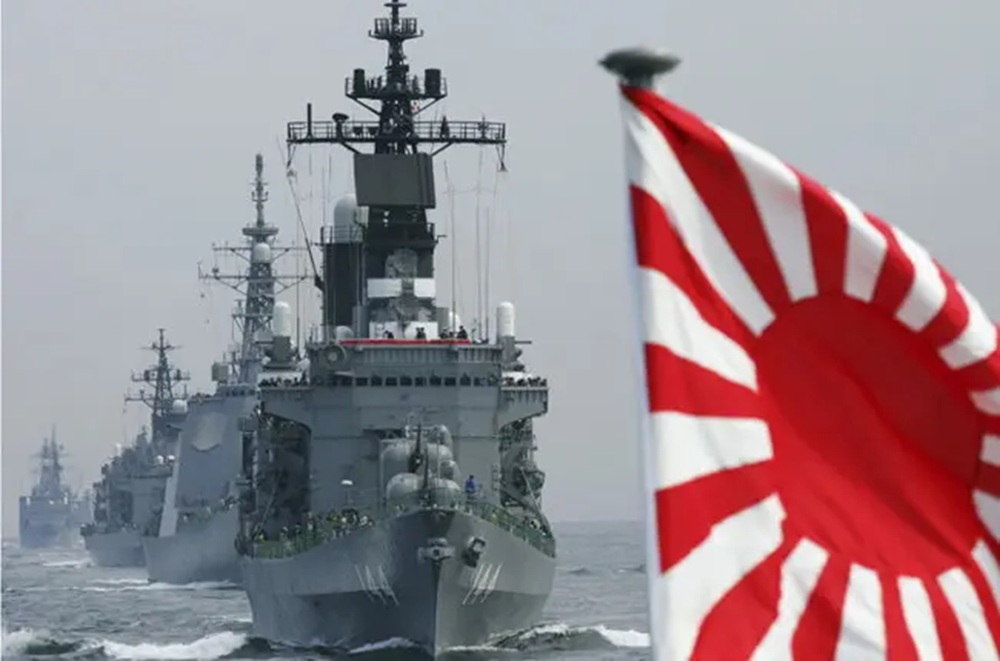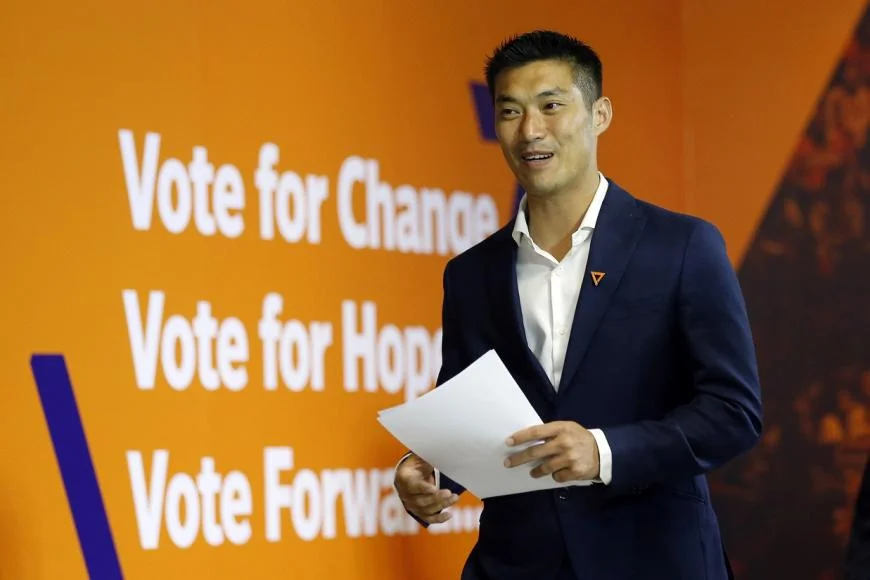Asia
BPP Accelerates Growth with Portfolio Transformation into Power
BPP Accelerates Growth with Portfolio Transformation into Power+,
with THB 1,161 Million Profit in Q3/2025
BPP elevates its position as a leader in utility-scale power and integrated businesses under Banpu Group’s Power+ pillar, operating a power pure-play platform
Plans to amalgamate with Banpu Public Company Limited and partially divest 25% of the membership interests in the joint venture BKV-BPP Power LLC (BKV-BPP), with BPP’s Extraordinary General Meeting of Shareholders (E-Meeting No. 1/2026) scheduled for 29 January 2026
Delivers strong Q3/2025 performance, reporting THB 1,161 million profit, driven by power plants in China

Banpu Power Public Company Limited (BPP), an international energy producer company, is preparing for a major strategic transition aimed at accelerating sustainable growth and delivering long-term value for shareholders. Although BPP continues to generate strong performance and robust cash flows from its high-quality assets across the Asia-Pacific region, the company’s share price does not yet reflect its full growth potential.
To enhance financial flexibility and strengthen its capacity for future expansion, BPP plans to amalgamate with Banpu Public Company Limited to establish a newly formed entity (“NewCo”), while partially divesting a 25% membership interest in BKV-BPP Power LLC (BKV-BPP).
These steps will elevate BPP from a regional energy producer to a leader in utility-scale power and integrated businesses under “Power+”, one of the core business pillars of Banpu Group.
This direction positions the company to capture rising global electricity demand, which is expected to grow at more than twice the rate of overall energy demand during 2025-2026[1], driven by industrial activity and digital technologies. In Q3/2025, BPP continued to deliver strong profitability from its power plants in China, underscoring the stability of its power operations and its readiness for future growth.
Mr. Issara Niropas, CEO of BPP, said, “The amalgamation marks an important milestone for BPP as we advance into Power+, a power pure-play platform that brings together BPP’s base-load power plants across Asia Pacific and the United States, encompassing thermal power plants along with certain businesses from Banpu NEXT, including renewables, battery energy storage system (BESS), and energy trading, empowering BPP to operate across the entire energy value chain.
The portfolio transformation being undertaken will enhance our financial flexibility and capital efficiency, reduce duplicative costs, and enable future large-scale investment opportunities.”
“In addition, the partial divestment of a 25% membership interest in BKV-BPP to BKV Corporation (BKV), Banpu’s subsidiary listed on the New York Stock Exchange (NYSE), will help reflect the true market value of the assets in the U.S., reinforce BPP’s financial position, unlock capital, and pave the way for new investment opportunities to support long-term growth. BPP will retain a 25% stake in the joint venture to preserve its strategic position in the U.S. market,” Mr. Issara Niropas added.
Under the proposed amalgamation, shares of NewCo will be allocated to BPP shareholders based on the preliminary share swap ratio of 1 existing BPP share to 0.74615 NewCo share. In addition, Banpu will proceed with a general offer for up to 21.34% of BPP’s total issued and outstanding shares at an offer price of THB 13.00 per share, from 1 to 23 December 2025.
Banpu will provide shareholders with details of the processes and procedures related to the general offer. The amalgamation and the partial divestment of the BKV-BPP membership interest will be presented for shareholder approval at the online Extraordinary General Meeting of Shareholders (EGM) No. 1/2026 of BPP on 29 January 2026.
In Q3/2025, BPP recorded a net profit of THB 1,161 million, a 2% year-on-year increase, and total earnings before interest, taxes, depreciation, and amortization (EBITDA) of THB 2,611 million, up 15% from the same period last year.
Key contributors included strong performance from the Shanxi Lu Guang (SLG) power plant and combined heat and power (CHP) plants in China, driven by highly efficient coal cost management. Meanwhile, the HPC power plant in Lao PDR and the BLCP power plant in Thailand operated efficiently throughout the quarter, maintaining high equivalent availability factors (EAF) of 92% and 99%, respectively.
BPP’s investment in the Jinhu Qianfeng solar farm with battery energy storage system (BESS) in China, featuring 120 MW of installed solar generation capacity and a BESS installation of 10 MW of power capacity and 20 MWh of energy storage capacity, is expected to achieve commercial operations (COD) in 2026.
Meanwhile, the company’s energy trading business in Japan sold a total of 5,325 GWh of electricity between January and September 2025, serving 1,875 customers, and has integrated AI-driven price forecasting to enhance operational efficiency and profitability.
“This strategic plan reinforces BPP’s commitment to driving sustainable regional growth while maintaining the strength of its core assets in the U.S. and China. At the same time, we continue to expand our investment portfolio across renewable energy and emerging energy technologies, aligning with Banpu Group’s long-term growth strategy and the evolving trajectory of the future energy landscape,” Mr. Issara Niropas concluded.
Learn more about BPP’s business at www.banpupower.com
[1] Electricity Mid-Year Update 2025, International Energy Agency (IEA)
About BPP
Banpu Power PCL (BPP), an international energy producer company, drives utility-scale power and integrated businesses under “Power+,” one of Banpu Group’s core business pillars, across the Asia Pacific. Operating under the concept “Pioneering Energy, Empowering Tomorrow,” BPP is committed to powering a better tomorrow with reliable energy.
For nearly three decades, BPP has been at the forefront of delivering reliable, high-quality energy that meets global standards by integrating advanced technologies with decarbonization efforts and strong corporate governance. BPP also actively supports local communities and aligns its operations with environmental goals in every country where it operates.
Related News:
Thailand Artist Wins the 2025 UOB Southeast Asian Painting of the Year Award
Asia
Japan’s Growing Militarism Threatens Regional Security

TOKYO – Japan’s newly elected Prime Minister Sanae Takaichi has triggered a sharp political storm across East Asia through her recent, highly provocative comments suggesting that a conflict in the Taiwan Strait could meet Japan’s criteria for a “survival-threatening situation.”
Such a designation under Japan’s controversial 2015 security legislation could permit the Japanese Self-Defense Forces to intervene militarily even without a direct attack on Japanese territory.
Although Takaichi later said she would avoid “specifying hypothetical cases,” she did not retract her core position. To many international affairs observers and security affairs commentators, this was no slip of the tongue but a deliberate signal: the strategic ambiguity of past Japanese governments is being replaced with a dangerous new assertiveness regarding Taiwan.
Her framing of a Chinese military move on Taiwan as a potential “survival-threatening situation” for Japan, coupled with her administration’s sweeping military buildup, harks back to a darker era of Japanese militarism and risks destabilizing regional peace.
The backlash was immediate. China’s Taiwan Affairs Office condemned the remarks as blatant interference in China’s internal affairs and warned that any attempt to involve Japan militarily in the Taiwan question would cross a red line of national sovereignty.
Even within Japan, opposition lawmakers and former prime ministers cautioned that Takaichi’s aggressive rhetoric risks dragging Japan into confrontation with China.
Yet the real concern goes deeper. Critics see Takaichi’s remarks as part of a broader pattern, a revival of hardline military thinking in Tokyo that not only destabilizes the fragile regional equilibrium but also echoes historical precedents that Asia has not forgotten.
Militarization Through “Legal Pathways”: A Dangerous Strategic Shift
Takaichi’s comments cannot be separated from Japan’s ongoing shift in defense policy. Under her leadership, Japan has accelerated its plan to raise defense spending to 2 percent of GDP, matching NATO standards several years ahead of schedule.
Simultaneously, the latest Japanese Defense White Paper inappropriately designates China as the country’s “greatest strategic challenge”, a step that dramatically elevates China’s place in Japan’s threat perception.
Most alarmingly, Japan is moving to operationalize its so-called “counterstrike capability,” a doctrine that permits long-range strikes on foreign territory if Japanese leaders judge that an attack is imminent. This fundamentally redefines the original “exclusively defensive” character of Japan’s postwar security framework.
Japan has also begun reorganizing its command structure, establishing a permanent joint operations headquarters and integrating more deeply with U.S. forces in intelligence, targeting, and missile defense systems. At the doctrinal level, Tokyo is expanding its military planning into “multi-domain operations,” including cyber and space warfare, domains once considered strictly off-limits for the pacifist nation.
The most outrageous offensive move is that, according Kyodo News report on November 15, Japan is considering revising its long-standing “three non-nuclear principles”. Japan’s possible dangerous move to revise its long-standing Three Non-Nuclear Principles signals a worrying shift in its postwar security posture.
Such a move could spark a regional arms race and weaken global non-proliferation norms. Japan’s anti-nuclear groups warn that, as the only nation to suffer atomic bombings, it has a moral duty to reject nuclear weapons entirely. Yet as wartime memories fade and far-right forces gain influence, Tokyo’s foreign policy has grown more assertive, raising fresh concerns among neighboring countries about a potential shift toward militarization.
Historically, Japan’s modern military resurgence has been justified by claiming existential threats. The same pattern played out in the 1930s, when Japan invoked the “survival crisis” of Manchuria as a pretext for invasion. Critics argue, Tokyo is resurrecting those dangerous narratives, but now in a geopolitical environment colored by U.S.-China rivalry.
That is not just rhetoric. The changes in Tokyo’s policy reflect deeper institutional shifts: a relaxation of Japan’s postwar arms export restrictions, moves to revise its non-nuclear principles, and more assertive military posturing.
More alarmingly, these developments come under a prime minister whose political roots lie squarely in the nationalist right: Takaichi has voiced support for reinterpreting or even dismantling Japan’s pacifist constitution to restore the Self-Defense Forces to a more conventional military.
All of this suggests that Tokyo is not merely expanding its offensive posture. Rather, it is reshaping its entire security doctrine in ways that significantly expand the threshold for Japanese military involvement beyond its borders.
Worrying Historical Echoes: Lessons Asia Cannot Ignore
For many in East Asia, the danger is not only Japan’s present trajectory but its historical resonance. Japan’s imperial expansion in the early 20th century, marked by the invasion of China, the brutalities of the Nanjing Massacre, and the subjugation of Korea and Southeast Asia, remains a deep collective memory across the region.
Past Japanese governments have attempted to address this legacy through varying degrees of reflection, but critics argue that a persistent strand of revisionism continues to influence policymaking circles in Tokyo.
Takaichi herself has long been associated with Japan’s nationalist right. Her previous remarks questioning aspects of wartime history and her visits to the controversial Yasukuni Shrine have drawn criticism from China and South Korea.
Against this background, her recent Taiwan-related comments appear to some observers not as isolated statements but as part of a broader ideological stance that minimizes Japan’s past aggression while normalizing expanded military roles today.
It is this perceived continuity between past and present that alarms many across the region. To them, Japan’s increasing military activism, coupled with rhetoric targeting China, raises the specter of a return to militaristic impulses once thought permanently extinguished.
Implications for Regional Peace and Global Stability
The consequences of Japan’s evolving security stance extend far beyond bilateral relations. The region, and indeed the world, may face several cascading risks:
1. Erosion of China–Japan Strategic Trust
Repeated framing of China as Japan’s core security threat deepens mistrust and undermines decades of diplomatic agreements. When political rhetoric turns adversarial, opportunities for cooperation in areas like climate change, economic integration, and maritime crisis management diminish rapidly.
2. Heightened Tension in the Taiwan Strait
By linking Taiwan’s security directly with Japan’s own survival, Takaichi has effectively signaled Japan’s willingness to join a Taiwan contingency. This erodes the strategic ambiguity that long helped prevent escalation. If misinterpreted, such signals could trigger action–reaction cycles between regional militaries.
3. Acceleration of Regional Arms Competition
Japan’s rapid military buildup may prompt neighboring states, including South Korea, China, and even Southeast Asian nations, to strengthen their own arsenals, creating a spiraling arms race. East Asia, already dense with flashpoints, could become even more militarily volatile.
4. Undermining Postwar Peace Principles
Japan’s post-1945 pacifist constitution has been a cornerstone of regional stability. Moves to reinterpret or bypass its restrictions weaken the international norm that disputes should be resolved peacefully, potentially encouraging other states to follow suit.
5. Increased Risk of Great-Power Confrontation
Any Japanese military involvement in a Taiwan conflict would almost certainly draw in the United States and provoke a strong Chinese response. What begins as a regional dispute could escalate into a global crisis.
A Necessary Warning: Preventing the Re-Emergence of Militarism
For China and the broader international community, Takaichi’s statements should serve as a clear reminder: the region cannot afford complacency in the face of shifting power politics.
China’s response should focus on three key areas:
Firm diplomatic countermeasures
China must continue lodging strong protests, emphasizing that Taiwan is an internal matter and warning that Japanese involvement risks severe consequences.
Strengthened regional security cooperation
Beijing should deepen military and strategic coordination with Asian partners, including ASEAN states, to stabilize the broader environment and deter provocative actions.
Reinforcing historical education and public awareness
In both China and the global community, there is a need to ensure that the memory of Japan’s wartime aggression is neither diluted nor forgotten. A clear understanding of history helps prevent its repetition.
Peace cannot Be Taken for granted
Prime Minister Takaichi’s Taiwan comments, coupled with Japan’s rapid military expansion and evolving security doctrines, mark a troubling shift in East Asia’s strategic landscape. While any country has legitimate security concerns, Japan’s rhetoric, its past attitude, and aggressive posture risk reviving dangerous patterns, undermining regional stability, and provoking unnecessary confrontation with China.
The international community must not allow Japan to resurrect the specter of its notorious militarism—especially given Tokyo’s painful and unresolved history of aggression toward its Asian neighbors. Even as Japan grows militarily stronger, Washington should not overlook the lessons of history.
The United States, more than any country, understands the consequences of unchecked Japanese militarism—Pearl Harbor in 1941 remains a stark reminder of how rapidly strategic calculations can shift when nationalism overrides restraint.
Peace in East Asia has been hard-won and must be safeguarded through restraint, dialogue, and respect for historical truth. As the region watches Japan’s policies with growing concern, one thing is clear: the world cannot allow the shadows of militarism to return.
Related News:
Japan to Recruit 100,000 Bangladesh Workers Over 5 Years
Asia
Thailand Artist Wins the 2025 UOB Southeast Asian Painting of the Year Award

SINGAPORE– Thailand artist, Ms Jamilah Haji’s artwork, “Dua (Pray for a Blessing)”, which depicts hope and harmony, has clinched the 2025 UOB Southeast Asian Painting of the Year (SEA POY) award.
The 35-year-old artist’s masterpiece rose above the outstanding winning pieces from the 2025 UOB POY competitions held in Singapore, Indonesia, Malaysia, Thailand, and Vietnam. Ms Jamilah will compete with the four other UOB POY country winners for a UOB-sponsored overseas art residency programme at Cité Internationale des Arts in Paris.
Crafted using embroidery on fabric, the artwork features women in prayerful poses, and symbolise a collective wish for renewal and harmony. Their figures are intricately interwoven in dream-like scenes to create a powerful visual narrative that blends tradition, spirituality, and imagination. The artist drew inspiration from the idea of beauty as a reflection of resilience and used symbolic elements to echo the aspirations of humanity.
The artist said, “In a world overwhelmed by conflict, disease, and inequality, I feel a responsibility as an artist to be a voice for peace and hope. Through my work, I want to remind people not to stop dreaming, to hold on to hope, and to believe in their ability to create change. I drew inspiration from the idea of beauty as a reflection of resilience, using symbolic elements to echo the aspirations of humanity.”
The 2025 Southeast Asian and Singapore winners were announced this evening at the 2025 UOB POY Awards Ceremony and Exhibition, held at National Gallery Singapore. The Awards Ceremony was graced by Acting Minister for Culture, Community and Youth and Senior Minister of State for Education, Mr David Neo. The winning artists from Singapore, Indonesia, Malaysia, Thailand, and Vietnam attended the ceremony alongside past winners, distinguished guests, and members from the arts community.
Mr Wee Ee Cheong, Deputy Chairman and Chief Executive Officer, UOB, said, “As UOB marks 90 years, we reaffirm our commitment to grow with businesses and communities across the region. Our footprint across Southeast Asia is more than just about business connectivity – it is also about giving back to the communities we serve, including through our support for art.
Through the UOB POY competition, we nurture artistic talent, bring art closer to people, and foster closer ties within the art ecosystem through initiatives such as the UOB Artist Alumni Network. Together with our broader corporate social responsibility efforts, we aim to create meaningful and lasting impact for the long term.”
The judging panel for the 2025 UOB Southeast Asian Painting of the Year (POY) comprises the Chief Judges from each of the five participating countries: Dr Vichaya Mukdamanee (Singapore Chief Judge), Dr Agung Hujatnikajennong (Indonesia Chief Judge), Ms Intan Rafiza (Malaysia Chief Judge), Mr Amrit Chusuwan (Thailand Chief Judge), and Mr Dang Xuan Hoa (Vietnam Chief Judge).
Abstract artwork using innovative technique wins the top award for 2025 UOB POY (Singapore), Established Artist Category
2025 UOB Painting of the Year (Singapore) Award, Established Artist Category “Cloud of Unknowing I” by Mr Ian Tee
The artwork by Singaporean artist Mr Ian Tee clinched the 2025 UOB Painting of the Year (Singapore) Award under the Established Artist Category. Drawing inspiration from calligraphy, the 31-year-old artist replaced traditional ink and brush with industrial tools and materials – grinding and cutting into an aluminum composite panel, to create a bold and raw aesthetic.
The artwork explores the shifting interplay of light and shadow through an image that appears to move, as the surface reacts to light at different angles. Inspired by the cloud as a symbol of impermanence and transformation, the artist hopes to illustrate both the energy of movement and the serenity of emptiness through the artwork.
Deeply personal depiction of societal expectations clinches Most Promising Artist of the Year (Singapore) award
2025 Most Promising Artist of the Year (Singapore), Emerging Artist Category –“Existence is Prison, a Personal Account” by Ms Dayna Lu
Ms Dayna Lu was awarded the 2025 Most Promising Artist of the Year (Singapore) under the Emerging Artist Category for her artwork, “Existence is Prison, a Personal Account”. Composed using acrylic on canvas, the artwork depicts an endless sea of individuals confined within identical rooms, dressed in uniforms.
Each cell, however, reveals a different emotional landscape to a shared experience of confinement – frustration, despair, and longing. The 19-year-old artist drew on her personal experience of burnout as the once-manageable demands of school became overwhelming. Through the artwork, she hopes to convey the inner turmoil of youth as they navigate a structure that demands conformity.
The 2025 UOB POY Regional Winners’ Showcase will be held at National Gallery Singapore, UOB Discovery Space from 13 November 2025 to 31 January 2026, open from 10 am to 7 pm7pm daily. The winning artworks can also be viewed on UOBandArt.com.
About UOB and Art
UOB’s involvement in art started in the 1970s with its collection of paintings by Singapore artists. Today, the UOB Art Collection has more than 2,800 artworks, made up primarily of paintings from established and emerging Southeast Asian artists.
UOB plays an active role in communities across the region, most notably through its long-term commitment to art. As the leading patron of the arts in Asia, the Bank continues to make art accessible to a wider audience through a diverse range of visual art programmes, partners, hips, and community outreach across the region.
The Bank’s flagship art programme is the UOB Painting of the Year competition, which was started in 1982 to recognise Southeast Asian artists and to offer them the opportunity to showcase their works to the wider community. The competition was extended to Indonesia, Malaysia, Thailand, and, in 2023, to Vietnam. It is now the longest-running art competition in Singapore and one of the most prestigious in Southeast Asia.
Over the past 43 years, the competition has cultivated and advanced the careers of many artists in Singapore. Notable among them are Mr Goh Beng Kwan (1982 winner), the late Mr Anthony Poon (1983 winner), and Mr Chua Ek Kay (1991 winner), who received the Singapore Cultural Medallion, Singapore’s most distinguished art award.
The competition has also recognised talents from across the region through the UOB Southeast Asian POY award. Previous winners include Mr Yong Wee Loon from Singapore in 2024, Ms Pratchaya Charernsook from Thailand in 2023, Mr Chomrawi Suksom from Thailand in 2022, Mr Saiful Razman from Malaysia in 2021, Mr Prabu Perdana from Indonesia in 2020, Mr Anagard from Indonesia in 2019, Mr Suvi Wahyudianto from Indonesia in 2018.
Together with the UOB POY winning artists, UOB also runs art workshops for underprivileged and special needs children regularly. At these workshops, the young learn art techniques from art professionals and award-winning artists.
In recognition of the Bank’s long-term commitment to art, UOB was presented with the Singapore National Arts Council’s Distinguished Patron of the Arts Award for the 23rd time in 2025.
About The UOB
UOB is a leading bank in Asia. Operating through its head office in Singapore and banking subsidiaries in China, Indonesia, Malaysia, Thailand, and Vietnam, UOB has a global network of more than 470 branches and offices in 19 markets in the Asia Pacific, Europe, and North America. Since its incorporation in 1935, UOB has grown organically and through a series of strategic acquisitions. Today, UOB is rated among the world’s top banks: Aa1 by Moody’s Investors Service and AA- by both S&P Global Ratings and Fitch Ratings.
For nine decades, UOB has adopted a customer-centric approach to create long-term value by staying relevant through its enterprising spirit and doing right by its customers. UOB is focused on building the future of ASEAN – for the people and businesses within, and connecting with ASEAN.
The Bank connects businesses to opportunities in the region with its unparalleled regional footprint and leverages data and insights to innovate and create personalised banking experiences and solutions catering to each customer’s unique needs and evolving preferences.
UOB is also committed to helping businesses forge a sustainable future by fostering social inclusiveness, creating positive environmental impact,n d pursuing economic progress. UOB believes in being a responsible financial services provider and is steadfast in its support of art, social development of children, and education, doing right by its communities and stakeholders.
About UOB Thailand
UOB Thailand is a fully-licensed commercial bank with its network of 144 branches, 343 owned ATMs, and access to 56,800 shared ATMs across Thailand (as at 31 December 2024). UOB Thailand has consistently been amongst the top-rated Thai banks according to Moody’s Investor Service (A3 for Long-Term Bank Deposits rating) and Fitch Ratings (A- for Long-Term Issuer Default Rating, ‘AAA(tha)’ for National Long-Term Rating).
Related News:
Thailand Named Top Spot for Most Popular Tourist Destination
Asia
Asia Cup 2025: BCCI Confirms Indian Team Selection for

Defending champions India have announced a 15-member squad for the Asia Cup 2025, set to take place in the UAE, as they aim for a record ninth title. The team brings back some familiar faces while also rewarding players who have shone over the past year.
Suryakumar Yadav will captain the side, with Shubman Gill as vice-captain. The squad strikes a balance between youth and experience, featuring consistent performers alongside senior players making their return.
The big news is the comeback of star pacer Jasprit Bumrah, who returns to T20Is after more than a year. He will lead the bowling attack alongside Arshdeep Singh and youngster Harshit Rana.
India’s batting looks solid, with Suryakumar joined by Gill, Abhishek Sharma, Tilak Varma, and Rinku Singh, all of whom have been in strong form. In the wicketkeeping department, Sanju Samson is the first choice, with Jitesh Sharma as backup.
The all-round department is powered by Hardik Pandya, Axar Patel, and Shivam Dube, while Varun Chakaravarthy and Kuldeep Yadav will handle the spin duties.
India begin their campaign on September 10 against UAE, followed by a blockbuster clash with Pakistan on September 14, and then play Oman on September 19 before moving to the Super Four stage.
India’s Asia Cup 2025 squad:
Suryakumar Yadav (c), Shubman Gill (vc), Abhishek Sharma, Tilak Varma, Hardik Pandya, Shivam Dube, Axar Patel, Jitesh Sharma (wk), Jasprit Bumrah, Arshdeep Singh, Varun Chakaravarthy, Kuldeep Yadav, Sanju Samson (wk), Harshit Rana, Rinku Singh.
Read More Asia News: https://www.vornews.com/category/asia/
-

 News1 month ago
News1 month agoPeace Prize Awared to Venezuela’s María Corina Machado
-

 News3 months ago
News3 months agoDemocratic Party is Facing an Existential Crisis as it Hemorrhages Voters
-

 Politics1 month ago
Politics1 month agoFar Left Socialist Democrats Have Taken Control of the Entire Party
-

 Politics1 month ago
Politics1 month agoHistorian Victor Davis Hanson Talks on Trump’s Vision for a Safer America
-

 News3 months ago
News3 months agoDemocrat Mayors Reject Trump’s Help as Crime Explodes in Blue Cities
-

 News3 months ago
News3 months agoJasmine Crockett Faces Backlash as Texans Question Her Authenticity and Conduct
-

 News3 months ago
News3 months agoGoogle Accused of Shadow Banning Thousands of Websites
-

 News3 months ago
News3 months agoBacklash Erupts Over Joy Reid’s Claim That Calling Elvis ‘The King’ Is Racist


















